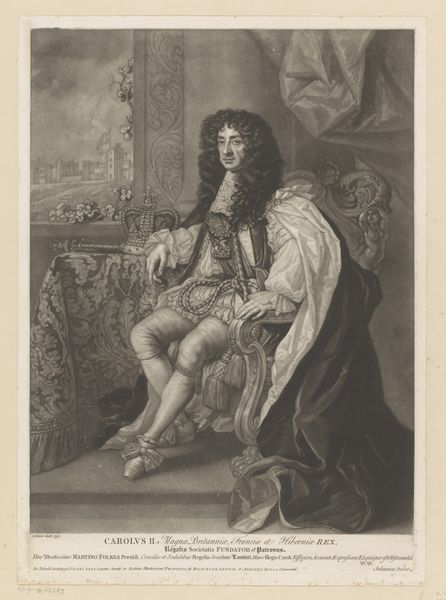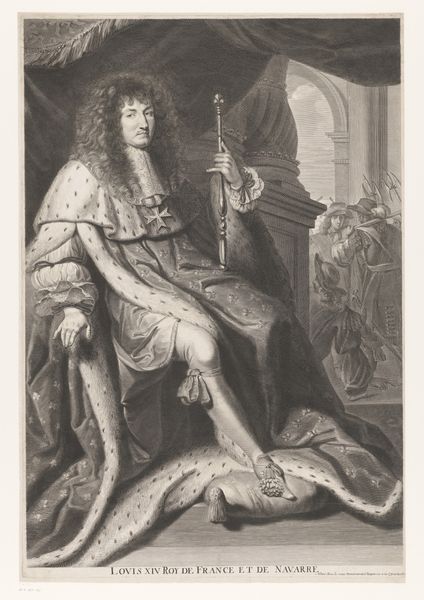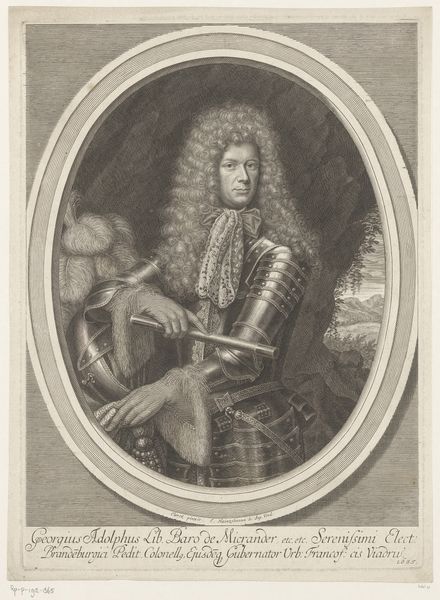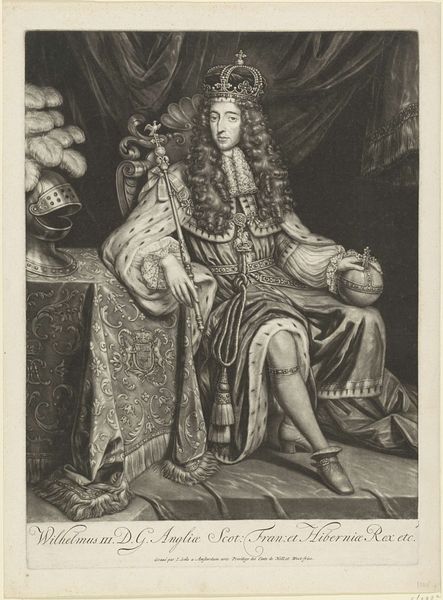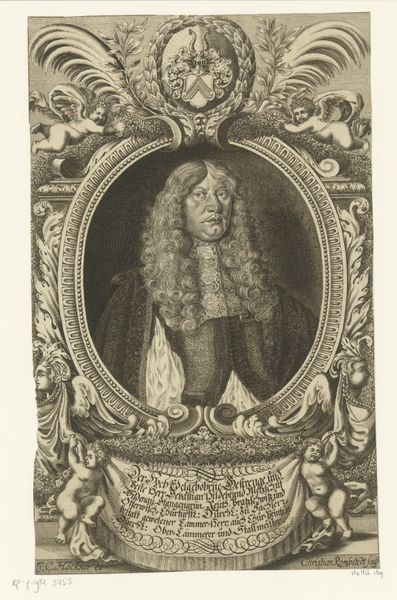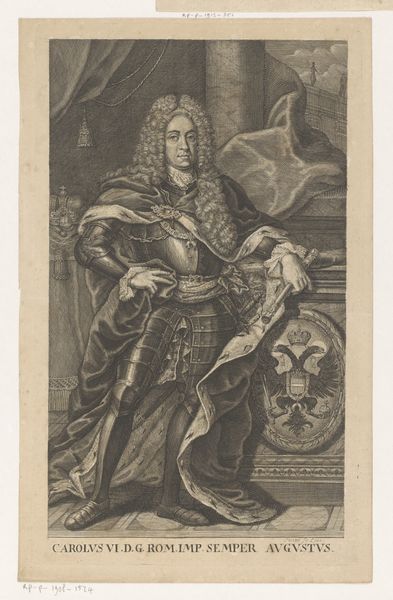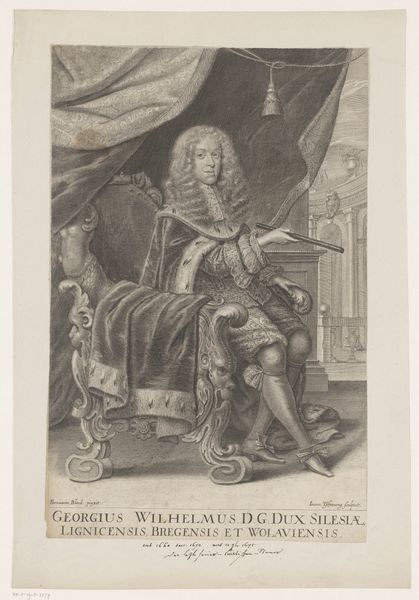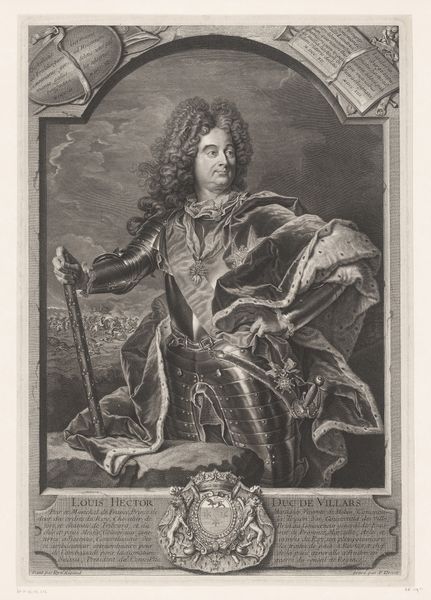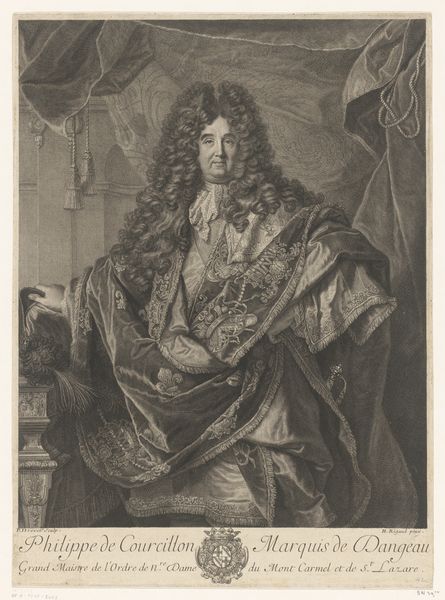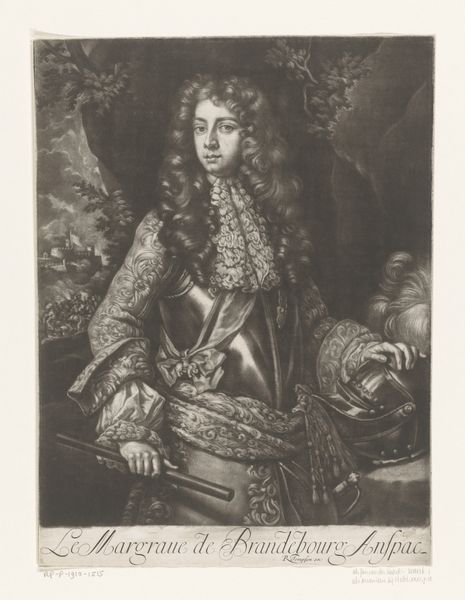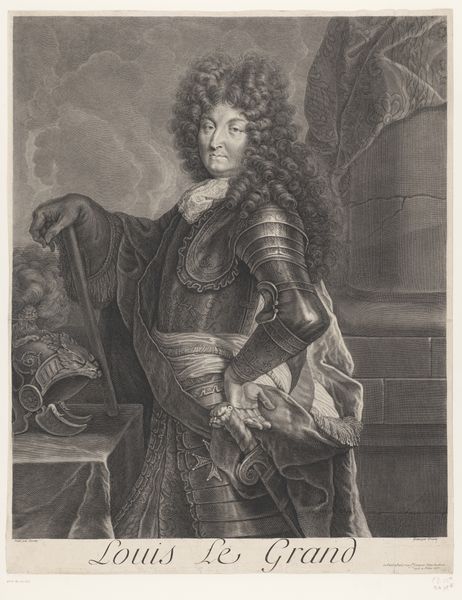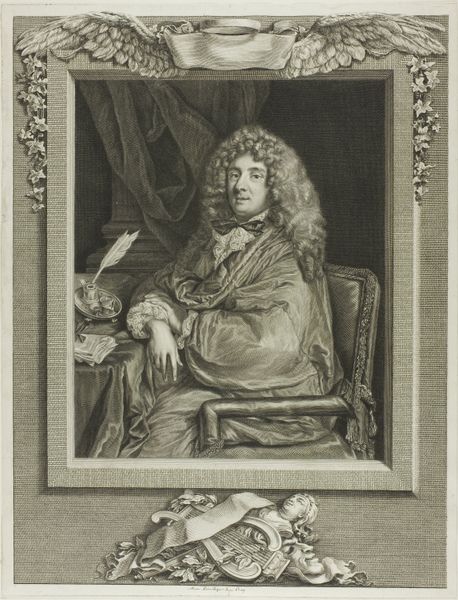
drawing, engraving
#
drawing
#
baroque
#
charcoal drawing
#
portrait drawing
#
history-painting
#
academic-art
#
engraving
#
portrait art
Dimensions: height 336 mm, width 254 mm
Copyright: Rijks Museum: Open Domain
This is Herman Hendrik Quiter’s portrait of Charles II, King of England. The portrait presents Charles II, who lived through a period of immense political and social upheaval, as a symbol of power and authority, but consider how performative this image really is. Charles sits in an ornate chair, draped in luxurious fabrics, with a crown resting beside him. His gaze is direct, his posture confident. What interests me most is how the portrait uses the conventions of royal portraiture to assert power, while perhaps revealing the constructed nature of such displays. Charles II was restored to the throne after a period of republican rule under Oliver Cromwell. Think of this portrait as carefully crafting an image designed to re-establish the monarchy’s legitimacy. The dark and somber tones might reflect the weight of the crown, or the turbulent times Charles II lived through. How can an image convey both authority and the burdens of leadership?
Comments
No comments
Be the first to comment and join the conversation on the ultimate creative platform.
